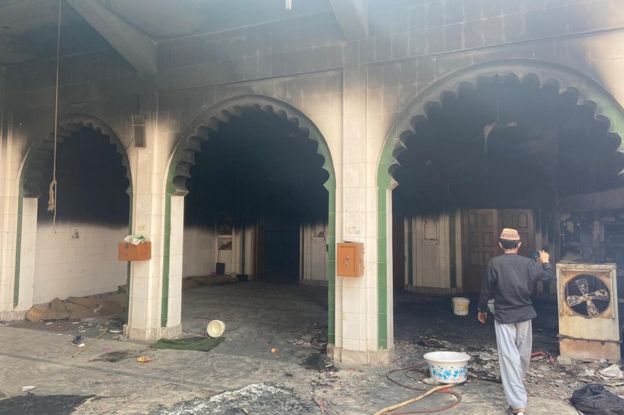Delhi remains on edge after three nights of rioting, with reports of Muslim homes and shops being targeted by violent mobs.
Twenty-seven people have been killed so far in the deadliest violence the Indian capital has seen in decades.The clashes first broke out on Sunday between protesters for and against a controversial citizenship law.
But they have since taken on communal overtones, with reports of many Muslims being attacked.
Photographs, videos and accounts on social media paint a chilling image of the last few days – of mostly Hindu mobs beating unarmed men, including journalists; of groups of men with sticks, iron rods and stones wandering the streets; and of Hindus and Muslims facing off.
Access to these areas was severely restricted on Tuesday, when most of the violence took place. Judging by the names released so far, both Muslims and Hindus are among the dead and injured.
The Delhi High Court, which is hearing petitions about the violence, has said it cannot let “another 1984” happen on its “watch”. In 1984, more than 3,000 Sikhs were killed in anti-Sikh riots in the city.
Prime Minister Narendra Modi tweeted on Wednesday, three days after the violence broke out, appealing for peace. He added that he had reviewed the situation and police were working to restore normality.
Opposition leader Sonia Gandhi has called for the resignation of Home Minister Amit Shah, saying he is “responsible” for the violence.
Delhi Chief Minister Arvind Kejriwal has described the situation as “alarming” and demanded for the army to be called in.
The unrest is centred around Muslim-majority neighbourhoods – such as Maujpur, Mustafabad, Jaffrabad and Shiv Vihar – in north-east Delhi.
The streets in these areas are littered with stones and shattered glass. Broken and burnt vehicles are strewn about, and the stench of smoke from smouldering buildings fills the air.
What is happening now?
While fresh clashes have not been reported on Wednesday, the city continues to simmer.
BBC reporters saw Muslim residents in Mustafabad leaving their homes with bags and bundles of their belongings, fearing further violence.
Some 189 people are injured, according to officials at the Guru Teg Bahadur hospital, where many of them have been admitted.
BBC reporters at the hospital say they saw people with all sorts of injuries, including bullet wounds, scrambling for treatment. They say the hospital seemed “overwhelmed”, and many of the injured were “too scared to go back home”.
Many, including journalists, have tweeted and spoken of mobs demanding to know their religion. At least one photojournalist said he was asked to remove his pants to prove his religious identity. This has also happened during religious riots in the past to identify Muslims as they are usually circumcised.
‘Burned prayer mats and a torn Koran’
Faisal Mohammed, BBC Hindi, Ashok Nagar
A small crowd of around a dozen people is standing outside a vandalised mosque in Ashok Nagar, one of the areas worst affected by the violence.
The front of the green and white building is scorched. An Indian flag and a saffron flag, commonly associated with right-wing Hindu groups, are flying from one of the minarets.
Torn pages from the Koran are strewn outside the building. Two young men are picking up the pages and putting them in a plastic bag.
One man says he will take the pages and bury them in a graveyard.
As I enter the building, I see skull caps and partially burned prayer mats.
The area where the mosque stands is a Hindu neighbourhood, but residents say that they had nothing to do with its desecration.
They blame “outsiders”, saying that they did not intervene as they were afraid of being targeted. – BBC News




